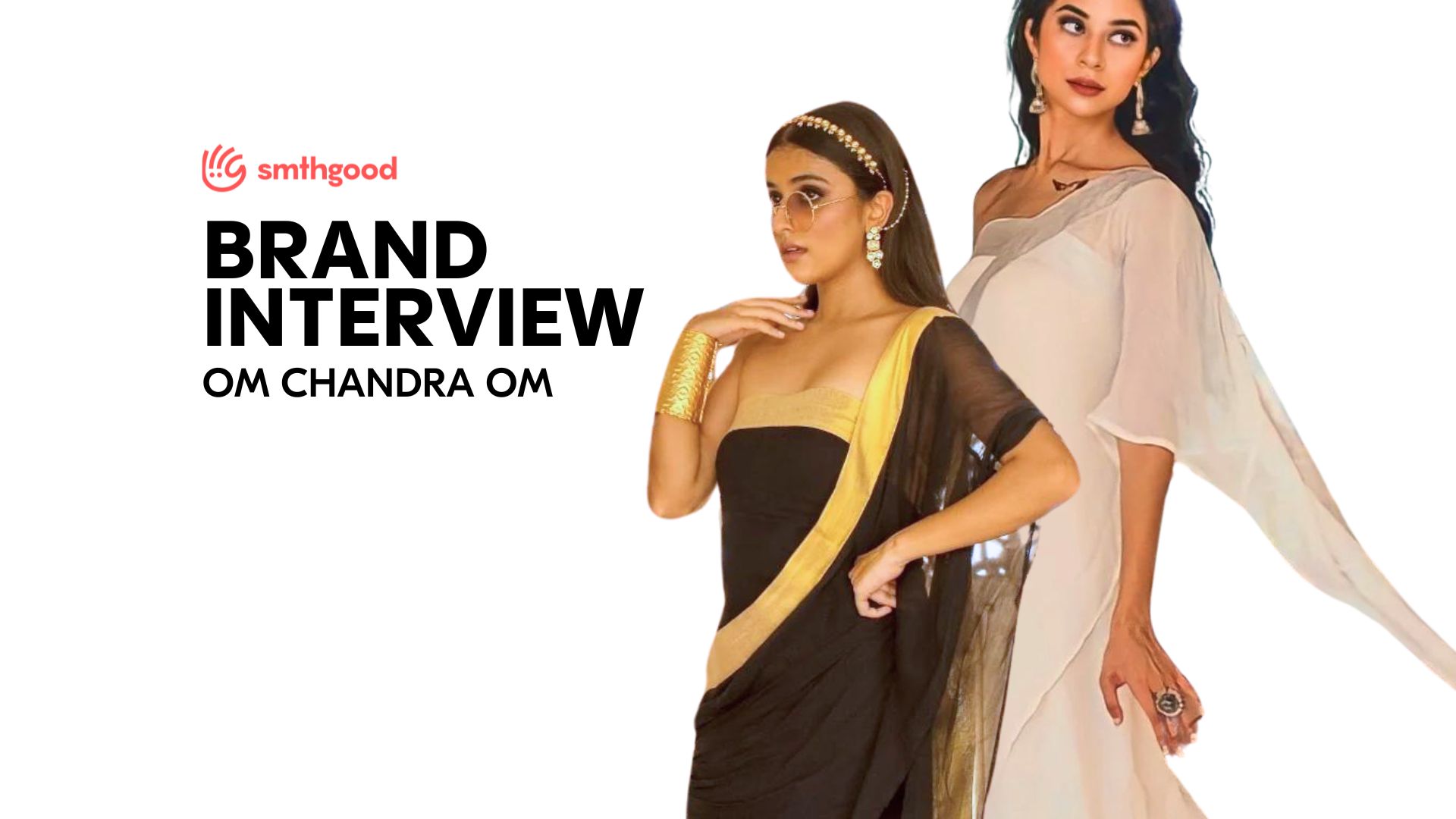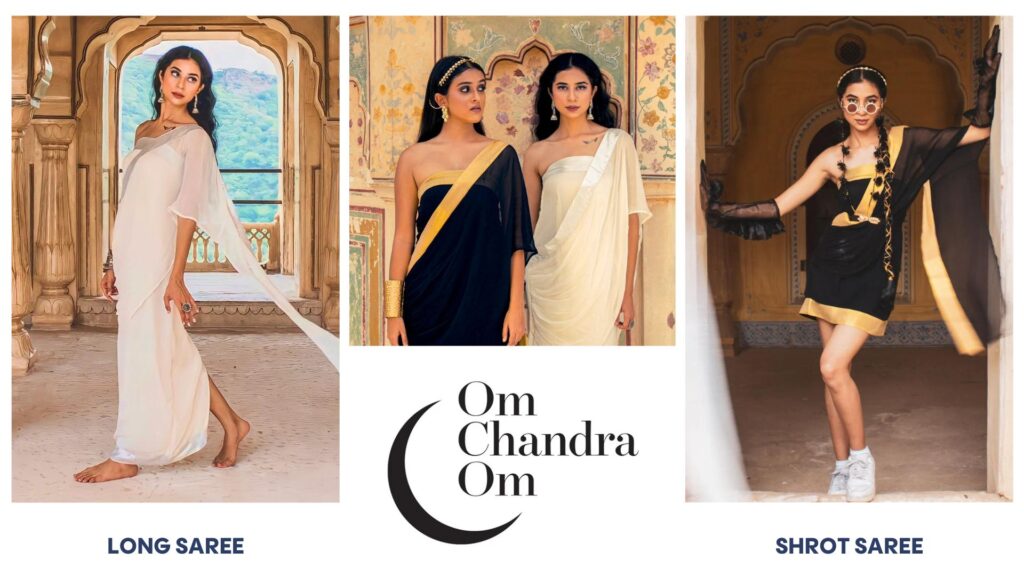Exclusive Interview With Brand: Om Chandra Om

SECTION 1: ABOUT YOU
1. Would you share a bit about yourself and where you’re from?
My name is Maggie Dumra and I am born and brought up in Singapore.
2. How did it all start?
OCO? It all began when I married my husband, who is Indian. Since then, I’ve attended numerous events where I had to wear sarees and other traditional Indian attire. Through these experiences, I realized that wearing a saree requires significant effort, knowledge, and practice. Many Indians I know also struggle with it, as it involves skillfully draping and wrapping a lengthy piece of fabric.
Given my background in design and creativity, I decided to take matters into my own hands. I wanted to create modern ethnic Indian apparel that I could easily wear without assistance. Traditional outfits are often cumbersome and not practical for regular outings or dinner dates. For the sake of sustainability, I aimed to design styles that I could wear more frequently and make better use of.
3. Was it always the intention to become a sustainable and ethical designer?
I have always wanted to make an impact with anything i do for my brand or business. Be it socially or sustainably. It is wondering to be able to create and give back.
4. What was it that first raised your awareness of the issue of fast fashion?
The documentary on fast fashion was a real eye opener.
SECTION 2: ABOUT YOUR BRAND

1. Could you tell us more about your label?
Om Chandra Om is all about modernising ethnic wear.
Om Chandra Om is more than clothing – it’s a mission. We partner with ethical factories that believe in fair trade, fair wages, and empowering women.We choose smaller workshops, where artisans and fairness thrives. Fair wages and safe conditions are a given, not negotiable.But our purpose goes beyond. We’re dedicated to women’s empowerment, giving them leadership roles in these factories.
Our garments aren’t just fabric; they carry stories. They hold the dreams of artisans, the promise of fairness, and the strength of empowerment. Each piece we create threads a tale of change.
2. What is the ethos when you design? And what defines your style?
3. What have been some of the biggest challenges for you on this journey?
With any small boutique brand, the starting of it is always a challenge. To get people to know about your brand, to trust your product and to make their first jump to buying an apparel with you. That takes a lot of time and investment.
4. What do you want to achieve personally with your brand?
I want to be known as the edgey, modern ethnic wear designer that is both sustainable socially and environmentally.
SECTION 3: YOUR VISION FOR THE FUTURE
1. How would you explain the importance of brands like yours making steps to become more ethical and sustainable to someone who isn’t well-versed in what that means?
Changing the climate and addressing social issues won’t happen overnight. Educating everyone about sustainability and socially-conscious brands like ours is a long process. Consumers often prioritize price and variety over quality and the effort behind creating socially responsible and sustainable fashion. But if even one customer believes in our brand, it’s a win. We’ll take it slowly but surely.
2. For the consumers, what are the easiest ways that we can all be more sustainable in our approach to fashion?
Instead of making impulsive purchases, shopping should be approached like grocery shopping. Just as we have learned to carefully read labels and not buy the first thing we see on the shelves, I want to be mindful of what goes into my body. I take my time grocery shopping, reading labels and ingredients before making a purchase. Our shopping habits should reflect the same careful consideration.
3. In your own eyes, how has becoming a sustainable designer changed your life?I am now less impulsive and frivolous with my shopping habits, prioritizing quality over quantity. I consider whether an item is functional, practical, and something I will wear more than once.
4. People say that sustainable fashion is too expensive or too difficult to do. How do you usually respond to that?
I can’t argue with that because it’s true. Unlike mass producers, we don’t have the same cost advantages. We carefully consider fabric quality, origins, and the craftsmanship behind each piece, which all come at a price. Instead of just choosing a factory that is cheap, we often consider factors such as how ethical are and whether they are paying a decent wage to the workers. For eg. For at OCO, we work with fair trade factories in Jaipur to produce our apparels and that they mainly support women in the industry, as I champion women a lot, I know that hits the right note for me when it comes to ability to support another female in our manufacturing process.
However, you can rest easy knowing that your clothing isn’t made with child labor, harmful chemicals, or environmentally destructive practices. In the long run, the ethical choice is far more valuable.
Check out beautiful items from Om Chamdra Om on Smthgood. Click here to shop now.
____________________________________________________________________
Shop these wonderful sustainable & ethical brands on the Smthgood App.
The home of conscious fashion that is paired with a unique & gamified Lookbook Styling Tool.
Now available on the Google PlayStore & Apple AppStore.
Download now & earn double cashback coins on your first purchase.
For more articles, visit THE GOODNEWS for the latest fashion intel on conscious fashion!
For more information please visit www.smthgoodco.com
